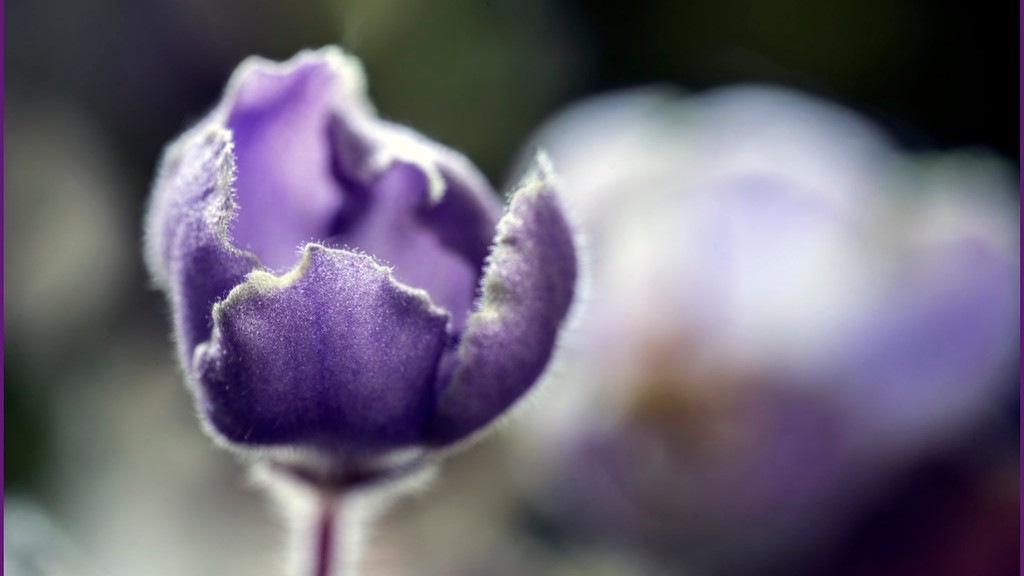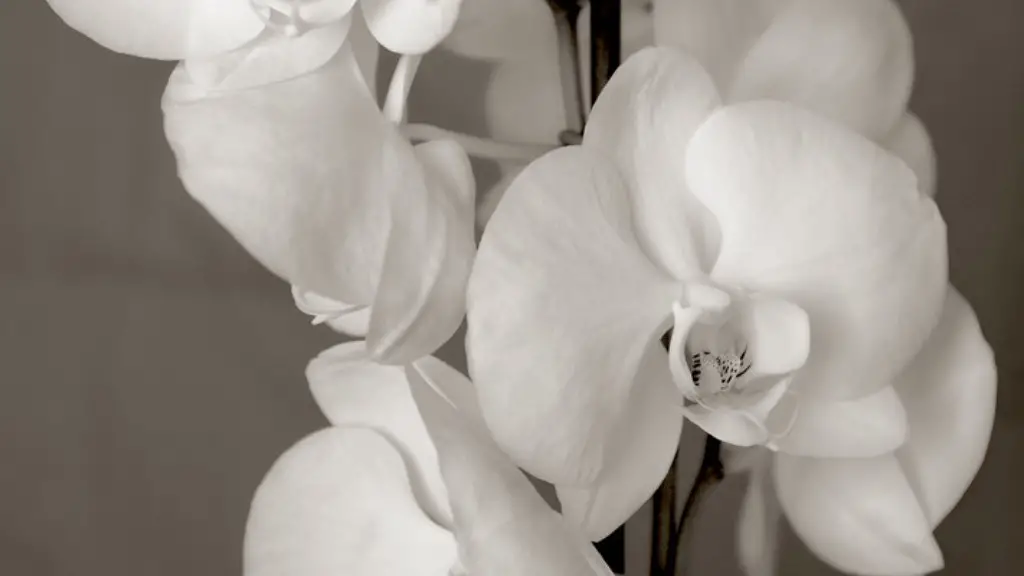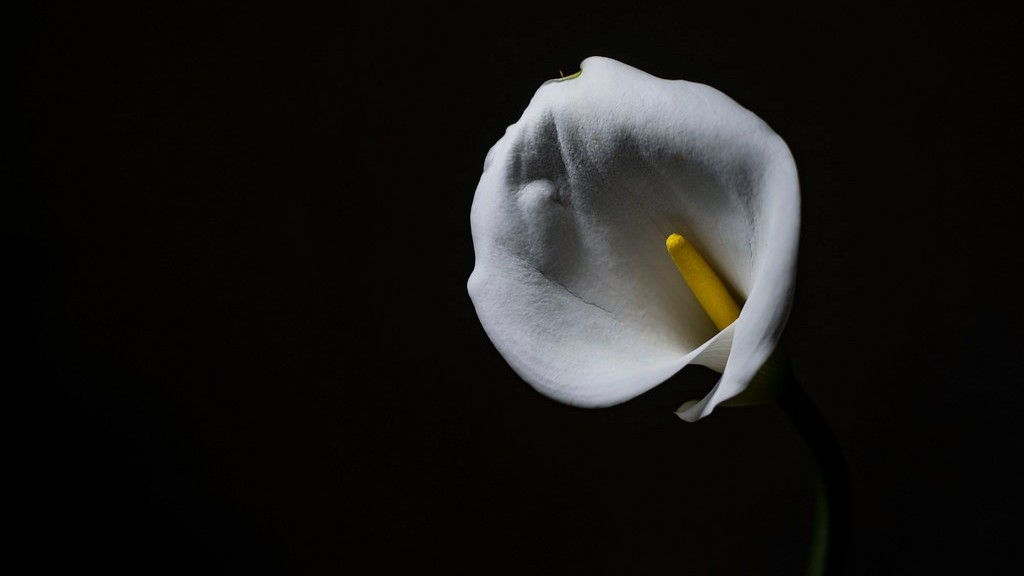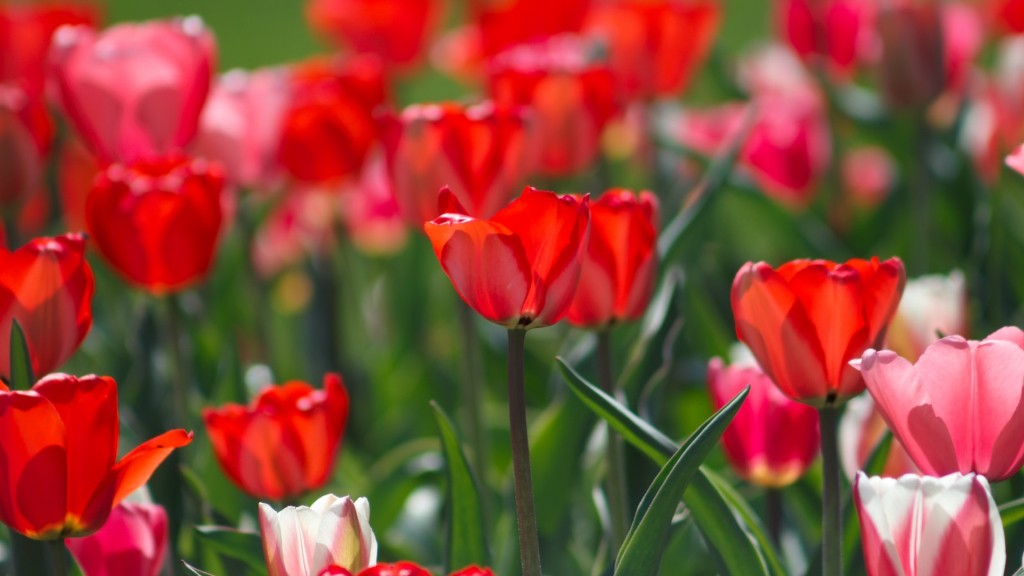African violets are a type of houseplant that is grown for its beautiful flowers. These plants do not need a lot of sunlight to thrive; in fact, too much sunlight can actually damage the leaves of an African violet. If you are growing African violets indoors, place them in a spot that gets bright, indirect sunlight.
African violets need bright, indirect sunlight. They can tolerate some direct sunlight, but too much will scorch their leaves.
Where is the best place to put an African violet?
When growing plants indoors, it is best to place them in bright, indirect light. A plant stand three feet away from a west- or south-facing window is an ideal location. Plants will still grow when situated right beside north- or east-facing windows, but leaves will be thin and spindly, and plants less likely to bloom.
A wicking system is a great way to make sure your African violets are never over watered. The system works by drawing water up from a reservoir into the soil, keeping the roots of the plant moist. The key is to only water once a week and allow the plant to completely dry out between waterings.
How much sun does an African violet need
African violets require at least 8 hours of light per day and 8 hours of darkness at night to thrive. For long lasting blooms, 12 hours of natural sunlight is ideal. African violets need bright light during the day.
African violets need plenty of sunlight, but only indirect sunlight. If violets get more than this, they will begin to show signs of scorching on the leaves and flowers. In some cases, too much sunlight will turn variegated leaf varieties entirely green.
Do African violets need bigger pots?
When potting African violets, it is best to choose a pot that is on the smaller side. This will help the plant to stay slightly pot-bound, which is ideal for its growth. If you have a standard African violet plant, your starter pot should be about 3-4 inches in diameter.
To avoid leaf spotting, do not mist the foliage of your African violet. Water on the foliage may cause permanent leaf spotting. Instead, use room-temperature water to water your plant. African violets are susceptible to crown rot, so it is important that the crown (the section of the plant at soil level) is not saturated with water.
Can I water African violets with tap water?
In most locations, tap water will be fine for African violets. However, the quality of tap water can vary depending on the location. Chlorine levels may fluctuate, depending on the season. In some areas, tap water may have high amounts of chlorine, chloramines, or dissolved solids. All of these things may adversely affect your African violets.
Houseplants are a popular way to bring a bit of nature indoors, and they can also help purify the air in your home. If you’re looking for a plant that’s easy to care for and thrives in indoor conditions, consider a succulent. Succulents come in a wide variety of shapes, sizes, and colors, and they’re simple to care for since they don’t need much water or other special care. One important thing to know about succulents is that they prefer bright, indirect sun. Too little sunlight can cause them to stretch for the light and produce few or no flowers, while too much sun can burn the leaves. An east-facing window is ideal, especially with a sheer curtain to block the sun’s harshest rays. Succulents also need eight hours of darkness every night in order to thrive.
How long do African violets live
When you first get your African violet, it will likely be in a 4-inch pot. Repot it into a 6- to 8-inch pot when the roots start to crowd the container and you see new growth on the plant. You can tell it’s time to repot when you see roots coming out of the drainage holes on the bottom of the pot.
African violet plants are best watered from the bottom up. Place the plant in a shallow tray of water for 30 minutes, allowing the soil to soak up the water through the drainage holes at the bottom of the pot. This will help to keep the leaves from getting too wet, which can cause them to rot.
Can I use Miracle Grow on African violets?
This is a complete fertilizer that will help keep your African violets and blooming houseplants healthy and vigorous. It is a slow-release fertilizer that will provide nutrients for your plants for several months.
There are a few different things to consider when choosing a pot for your African Violet. The first is the material the pot is made from. African Violets do best in a porous material like clay or terracotta, which allows the roots to breathe and prevents the plant from becoming waterlogged. Another thing to consider is whether or not you want a self-watering pot. These can be great for busy gardeners or those who forget to water their plants regularly. Some self-watering pots also come with a self-aerating feature, which is great for preventing your Violet from becoming waterlogged. Here are six of the best pots for African Violets, whether you’re looking for a self-watering option or not.
How often should you feed African violets
Your African Violet needs fertilizer to stay healthy throughout the year. During the spring and summer, you should fertilize your African Violet once every 14 days. In the fall and winter, you shouldn’t fertilize the plant at all to prevent over-fertilizing.
African violets only need water when the soil is almost dry. Usually you’ll need to water about once a week, but this depends on conditions like the temperature, the season, and the size of the African violet’s container. The best way to water African violets is by bottom watering.
What do Overwatered African violets look like?
If your African Violet plant has been over-watered, the soil will retain too much water This retention of water will cause the leaves and /or leaf stems to turn soft, limp or mushy. The solution to this problem is to allow the plant to dry out completely before watering it again. You can also try adding a drainage hole to the pot to help keep the soil from staying too wet.
Terra cotta is ideal for African violets because the porous material allows the roots to breath better and prevents the soil from staying too wet. African violet roots don’t go very deep; they like to go sideways, so don’t use a deep pot. Your pot must have suitable drainage holes so you can water from underneath.
Conclusion
While African violets need some sunlight to flower, too much sun will scorch their leaves. They thrive in bright, indirect light and will do best if placed near an east- or south-facing window.
No, African violets do not need a lot of sunlight. They are native to shady rainforests and do best in bright, indirect light.





